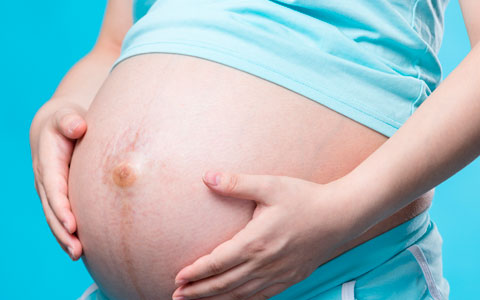
Fertility: stages of the menstrual cycle
30 October 2020
Increase your chances to conceive with a regular sleep schedule
24 November 2020Reciprocal IVF, how does it work?
Thanks to the development of medical technology, it is possible to access Reciprocal In Vitro Fertilization (IVF), ideal for LGTBI couples to participate both biologically and emotionally in pregnancy.
Also known as Couple Assisted Reproduction, shared maternity, double maternity or ROPA method (Reception of Oocytes from the Couple), reciprocal IVF has become an assisted reproduction treatment based on the donation of eggs from the couple.

What are the differences from traditional IVF?
In traditional IVF, initially the ovaries are stimulated with hormonal drugs to be fertilized and inseminated by sperm in the laboratory and, finally, the embryos created are transferred to the uterus of the person who provided the eggs. In Reciprocal IVF, one member of the couple goes through the stimulation process, and their eggs are collected and fertilized by donor sperm. The resulting embryo is transferred to the uterus of the other component of the couple, which will develop the pregnancy.
Phases of reciprocal IVF
Technically, Reciprocal IVF works just like insemination in gestational carriers or when using anonymous egg donors, using one of the members of the couple. During treatment, both limbs must be able to synchronize their reproductive cycle. The treatment continues with the stimulation of the ovaries of the gestate limb and the preparation of the uterus for the one who receives the embryos
After choosing who will be the pregnant woman and who will be the donor, the couple will begin the treatment consisting of 5 phases:
- Ovarian stimulation: multiple ovulation using hormonal drugs.
- Ovarian puncture: extraction of matured oocytes under ultrasound control
- Fertilization and embryo culture: obtained the oocytes, they are fertilized with donated semen. The acquired embryos are kept in culture for 3-5 days, controlling their development in a systematic way to verify their correct evolution and cell division.
- Embryo transfer: the embryos are transferred into the mother's uterus and the remaining embryos are vitrified. It does not require anaesthesia, as it is a painless process. The embryos are deposited to the fundus of the uterus through their vaginal insertion.
- Confirmation of pregnancy: after two weeks of embryo transfer, a test will be performed to confirm the pregnancy
Factors in the choice of donor and pregnant woman
The choice of which member of the couple will be the donor and which one will be the pregnant woman will depend on physical and psychological factors:
- Age: the member of the couple that is younger has a stronger and healthier ovarian reserve.
- Previous pregnancies: ensures a healthy uterus and a guarantee of successful pregnancy.
- Medical-genetic history: present a history of malformations or genetic alterations, as well as metabolic alterations
- Hormonal processes: interruptions of testosterone treatments.
- Emotional choice: this is a beautiful moment, and it is essential to follow the emotions!
There are no strict rules; it is a decision that will depend on the couple after an effective medical and psychological evaluation by our professionals, based on reviews of the medical history, gynaecological exams, analytical tests and genetic evaluations.

Biological connection in the baby
It is evident that the member of the egg donor couple contributes a great genetic load to the baby, but how does it affect the pregnancy? A groundbreaking study was conducted by clinical researchers and gynaecologists. The evidence points to the potential for the influence of the uterine environment on the expression of certain genes. The endometrial fluid regulates genes from the set of microRNA molecules (transcriptome that encompasses both messenger and non-coding RNA) secreted by the uterus. This develops a communication system between the parents who carry the baby and the developing foetus, which is subsequently reflected in the health during the child's life.

Emotional bond
The reciprocal IVF process offers the couple the opportunity to build a family, with both members acting in their development. Genetically speaking, the egg donor is already genetically linked to the child. The other member of the couple is linked to the baby through the process of gestation, subsequent delivery and breastfeeding. These experiences influence the paternal biological link to the child's development.
Success in reciprocal IVF
The statistics are quite positive when it comes to the treatment of reciprocal IVF, with 62% of couples achieving pregnancy. Patients who choose this method to raise their families are not sterile, which makes medical intervention beneficial. The most influential factor is the age of the egg donor, the younger the couple the greater the probability of a healthy pregnancy.
There is a high demand for this treatment since it presents satisfactory results, since thanks to this procedure, both members of the couple actively contribute to the development of their family.
